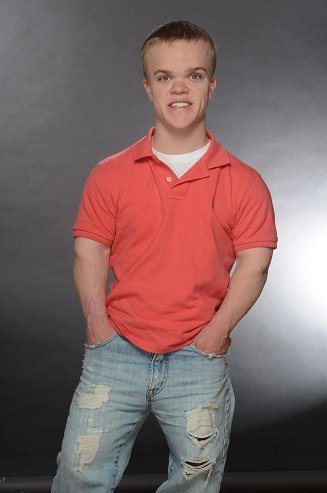The Medical/Genetic Condition, Dwarfism.
I am a lover of Nigerian movies, you see those oyinbo things ehn (it isn't just my thing at all), while watching some of these particular local movies, I picked interest in this particular baby actor (so I thought), he looked so cute and for every role I watched him play, I always said to myself that, his parents must be very proud of him. I, however, saw this little cute baby playing a role that was more advanced than his age, so I decided to look up his data online and it came to me as a shock when I found out the actor was 25 years old.
How can he even be 25 years old, he looked so small, not even speaking about height here now because he has a small set of teeth, and tiny eyes, he even speaks like a cute baby. I have seen different types of dwarfs, but those ones have a clearly matured face, this one was rather new to me, so I just decided to do my own research on this issue.

pexels.com
Dwarfism is a medical/genetic condition, where those who have it have an approximate adult height of 4 feet -10 inches, which could be less. Other names to describe this condition are; little people, and short stature, we really have to get really sensitive to people's preferences, but for the purpose of this article, we may just have to stick with the term dwarfism in order to get a clearer understanding on the topic. There are approximately 400 different types of existing cases of dwarfism, which include hormonal and metabolic disorders like the growth hormone deficiency, but out of all these existing cases of dwarfism, there are basically two categories of dwarfism;
Disproportionate Dwarfism: In this case of dwarfism, different bodies have different sizes, some of the body parts are average size while some are small in size, this type of dwarfism affects bone development, this is a more common type of dwarfism and those who have it, still have normal functional capacities, but in secondary rare cases of disproportionate dwarfism, hydrocephalus. there is excessive fluid around the brain affecting the functional ability of the human.
Anchondroplasia, is one common cause of disproportionate dwarfism, creating a short stature. This disorder leads to;
- Short arms and legs, specifically the upper legs and arms.
- Short fingers.
- Bowed legs which develop progressively.
- Swayed lower back which develops progressively as well.
- Large head containing a prominent forehead with a flattened nose bridge.
- An adult height of 4 feet.
- A trunk of average size.
- Extremely limited mobility.
spondyloepiphyseal dysplasia congenita(SEDC), is another rare condition that causes disproportionate dwarfism, with signs like;
- A broad and rounded chest.
- Cleft palate- Opening in the mouth roof.
- Hip deformities, leading to thighbones turning in an inward direction.
- A twisted foot.
- A little flattened cheekbone.
- Hearing and vision issues.
- An adult height of 3-4 feet.
- Short neck.
- Neck bone instability.
Proportionate Dwarfism: This type of dwarfism is a rare one, it appears at birth or in early childhood limiting certain body parts to a small degree, proportioning every area of the body to extremely small proportions, I guess that clearly describes the case of the movie actor I mentioned earlier. 1
I think it will really be a great idea to speak on the genetics of dwarfism, wouldn't you agree? Not all cases of dwarfism disorders are known, most cases of dwarfism happen from a random genetic mutation coming from either the father's sperm or the mother's egg, instead of having a case of having it from either of the parent's complete genetic makeup.
Skeletal dysplasia: Caused by a genetic mutation, this mutation can either be inherited or occur spontaneously.
Diastrophic dysplasia: For this infection to occur, It has to be inherited in a recessive manner, in this case, the child has to get two copies of the mutated gene, one of the gene's from the mother and the other from the father.
Tuner syndrome: This condition affects only girls and women, it happens when the X chromosomes are missing or when they are partially missing. A female child inherits X chromosomes from each parent, and a girl who has tuner syndrome only has one functional copy of the female sex chromosome instead of the two. 1
Anchondroplasia: Inherited in a dominant manner, this means that the child only needs a copy of the mutated gene in order to get skeletal dysplasia. There is a highly slight chance that a child born to a couple with both parents having achondroplasia will have a standard height, but there is also a highly little chance, that the child will inherit both genes of dwarfism. In a case where the child inherits both genes of dwarfism, it creates a double-dominant syndrome, which is highly fatal and leads to miscarriage in most cases.
It is less likely for parents of children who have, achondroplasia carries the mutated gene, the mutation that occurs in the child occurs basically at conception.
It is, however, not only dwarfism that creates short stature, short stature can be caused by other medical conditions like; kidney disease, hormone deficiency, poor nutrition, and other problems linked to the inability of the body to absorb useful nutrients. 2
How to diagnose dwarfism.
Some cases of dwarfism may be recognized at birth, after the child has been measured and weighed, then compared to the population of recorded height and weight of children their age, when a child consistently measures in a very low quantity based on the standard growth chart, it is another way to detect and diagnose the presence of dwarfism.
While the baby is still in the womb, a tentative prenatal diagnosis can be carried out, of course with an ultrasound. If the appearance of the baby in any way suggests dwarfism or if the parents know that they may possibly carry the gene for dwarfism, the doctor may proceed to recommend amniocentesis, which is a lab test of amniotic fluid from the womb.

commons.wikimedia.org
Oftentimes, dwarfism comes with some form of health complications, ranging from leg pain to back issues and even brain and lung functional problems. The most common cases of complications in dwarfism often linked to disproportionate dwarfism include;
- Spinal pressure at the base of the skull.
- Sleep apnea.
- Slow progress in motor skills development as a child.
- Weight gain that could place more strain on the spine and joints.
When those with cases of dwarfism gets pregnant, they could get cases of complication like respiratory issues, in some cases, a cesarean delivery is the only option for childbirth since the size of the pelvic region will not give room for vaganal delivery.
Unfortunately, there is no cure for dwarfism regardless of the cause, there are however therapies that can help limit the risk of possible complications. I think it is only good to have a complete article by also writing about the available therapies.
Hormonal therapy: Cases of dwarfism caused by a growth in hormone deficiency, are given injections of synthetic human growth, this treatment will not make the children reach a normal average height, but they can get close. The treatment would include daily injection, that is when the child is still young, the treatment may continue until he or she gets to the age of 20.
Ladies who have dwarfism as a result of *Tuner's syndrome require estrogen therapy and other hormones, this will help in the trigger of puberty and other appropriate female development. This estrogen theraphy may go on, until the woman gets to the age of menopause.
Surgical Options: For those with health complications as a result of the conditions, surgical treatments will help for;
- Spine stabilization.
- Correct bone growth direction.
- Increase channel in the vertebrae surrounding the spinal cord, this will help to relieve pressure on the spinal cord.
Physical therapy and orthotics: These are noninvasive solutions that will help with complicated cases of dwarfism.
Finding out all this information about dwarfism really got me thinking about what they have to go through, coupled with social stigmatization.
References.
https://www.mayoclinic.org/diseases-conditions/dwarfism/symptoms-causes/syc-20371969
https://www.webmd.com/children/dwarfism-causes-treatments
https://www.healthline.com/health/dwarfism
https://www.nhs.uk/conditions/restricted-growth/

Hi, I am Tobi a writer, speaker, relationship blogger, and lover of good music. I love making friends and learning from people. Want to hear me speak on relationships and general life issues, you can find my podcast channel Here and I also have a youtube channel where you can listen and watch any episode for free, do not forget to subscribe and share with friends. I sincerely appreciate every love I get from members of the community and do well to keep them coming.
Thanks for your contribution to the STEMsocial community. Feel free to join us on discord to get to know the rest of us!
Please consider delegating to the @stemsocial account (85% of the curation rewards are returned).
Thanks for including @stemsocial as a beneficiary, which gives you stronger support.
Well, this post is very clarifying. I actually didn't know about this medical and genetic condition. Thanks for the information. lovely job!
Thank you @freakshow90, have a great evening.